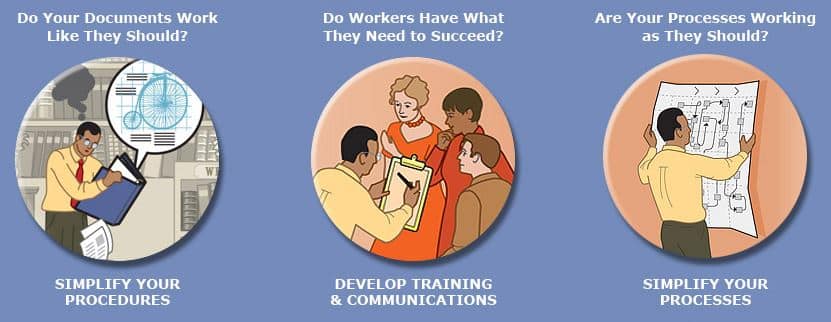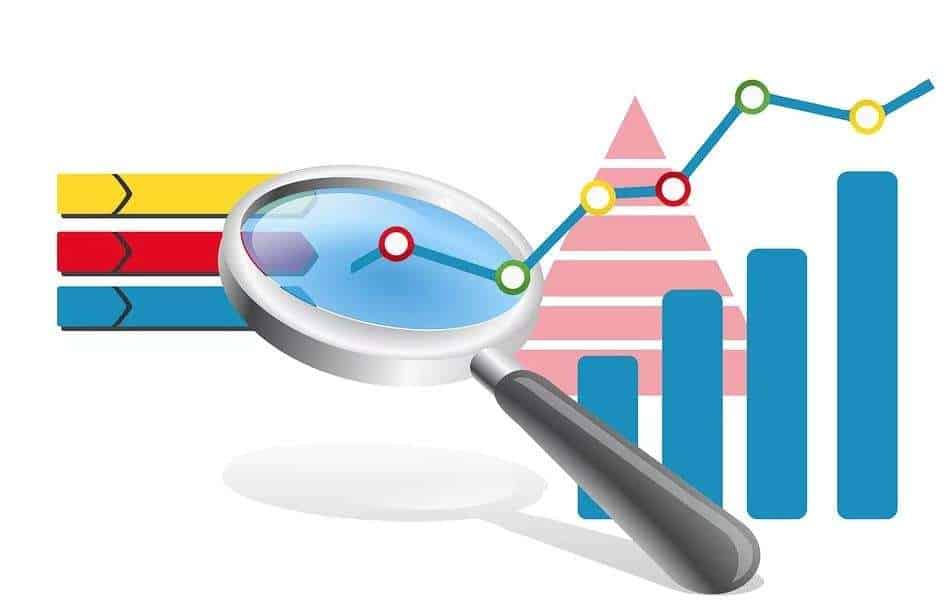What Is Continuous Improvement?

What if your sales increased from $100,000 to $110,000 per day and your profit increased from $10,000 to $11,000 – did you improve by 10%? The answer is “no” – no improvement occurred. In fact, your process deteriorated. Sure, revenue increased, but was this really improvement? Let’s look at an example and truly figure out, what is continuous improvement?
Extra Expenses Prevent Improvement
In the table below, we have the before and the after scenario. You can see that fixed costs are fixed, and do not change with additional revenue. So you should get more than 10% (11.8% to be exact) profit from 10% growth.
And notice that in order to maintain a 10% profit we have to spend $2,000 in Extra Expenses. These extra expenses represent your process inefficiencies. These expenses could be sales discounts, travel, overtime, or something else. The names don’t really matter. What does matter is that we are not improving.
| Revenue |
Before
|
After
|
Difference
|
| Sales | $100,000 | $110,000 | $10,000 |
| Expenses | |||
| Fixed costs | $20,000 | $20,000 | $0 |
| Extra Expenses | $2,000 | $2,000 | |
| Variable Costs | $70,000 | $77,000 | $7,000 |
| TOTAL Expenses | $90,000 | $99,000 | $9,000 |
|
|
|||
| Gross Profit | $10,000 | $11,000 | $1,000 |
Process Evolution Enables Improvement
Business improvement results from business process evolution, not from an increase in scale. What’s the difference? Scale increases when we hire another person, increase expenses, or purchase more assets in order to acquire or service more business. Business process evolution occurs when we change the business process and as a result can release hidden capacity and service more business without adding any costs – and this is a form of efficiency. You can measure efficiency with the formula:
Efficiency = Output / Costs
But business process evolution is about more than just changing costs. It is about changing time, increasing process velocity, and getting more output from the costs you already have. Cutting costs, by itself, does not evolve a business process. In fact, reducing costs, without properly understanding how those costs relate to the business process, can actually decrease process evolution (devolution). Let’s review an example…
A Cost Reduction Case Study
A company decreases costs by switching suppliers and using cheaper materials for their manufacturing process. Now the purchasing department is happy they are saving money. The bottom line is starting to look better as profits initially increase. And so this improved the business process, right? Well…
But then complaints start rolling in from the field. Products are breaking down faster. Technical support costs rise, and customers start reducing their orders. Not only do profits evaporate, but customer goodwill does too. To offset this, your first reaction might be to switch back to the old supplier. This is much easier and it fixes the immediate problem, but it won’t recapture the lost sales, customers and damage to the company’s reputation.
But, again, you need to focus on the most important issue. There is a limit to the amount of costs one can reduce in any process – zero. You can’t reduce costs below zero. On the other hand, there is no limit to the process potential we can achieve. Process evolution concerns the numerator (the output), not the denominator (the costs) in the efficiency equation above.
Change in Process Evolution = New Output / Old Output (assuming costs are held constant)
By focusing on business process evolution instead of costs we can continue to increase our output forever. We just have to make sure that the output increases faster than the costs. Then what we have is incremental improvement. But how do you achieve this?
Affecting Process Evolution
It’s all about collecting feedback to set the right priorities for your change process and identify the variation that is causing all the trouble. The feedback drives the change process. The more feedback you get the better you will be able to understand the variability and evolve your process. So let’s take a look at what your change process needs to include.
- Feedback Records with Deficiency Notations
- Trend Analysis
- Corrective Action Process and Criteria for Action
- Audit Process
- Management Review Process
And then ask yourself the following questions about your change process:
- Are process feedback records created?
- Have the feedback records been analyzed for process deficiencies?
- Are the deficiencies analyzed for statistical significance?
- Are the deficiencies of statistical significance written up for corrective action?
- Is corrective/preventive action implemented?
- Is there an objective review of all processes to ensure the change process is working?
- Does management review all findings to ensure the change process is working — and that processes are evolving to meet or exceed organizational requirements?
 So What Is Continuous Improvement?
So What Is Continuous Improvement?
With these thoughts in mind, you can see how important it is to first figure out what is continuous improvement and note how it can actually affect your business.
And if you need help improving your processes, check out Bizmanualz course listings.















Enjoyed reading the article it opened my eyes on what most business do especially sme ,( small medium enterprises ) in south Africa they tend to look at Gross Profit margin changes regardless of the increases in inputs, be it Laboyr, materials assets, systems
Its quite recommendable that your analysis didn’t forget performance evaluation of the firm so as to ascertain positive moment and be able to carry out remedial / corrective measures to be cost effective as an organization